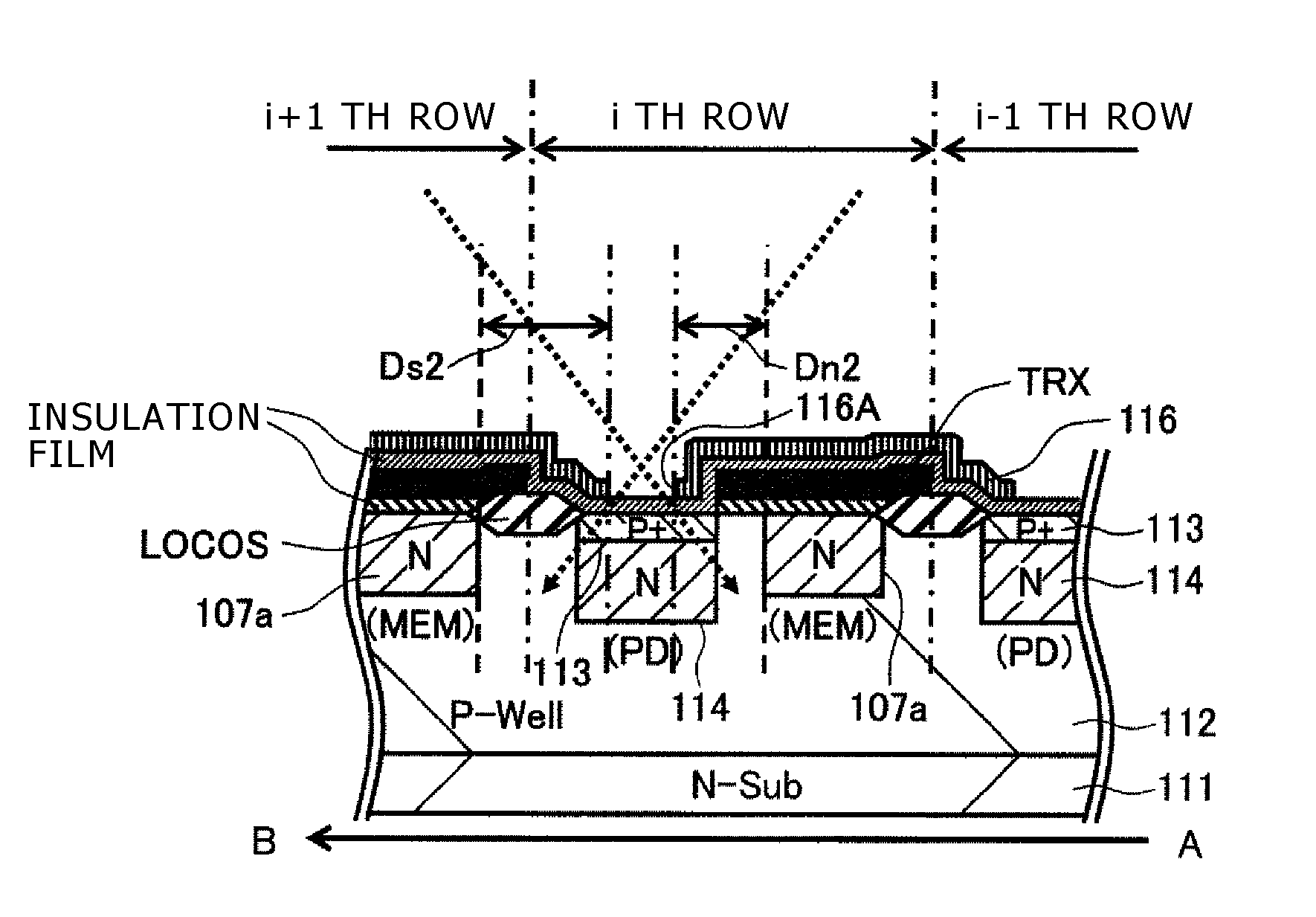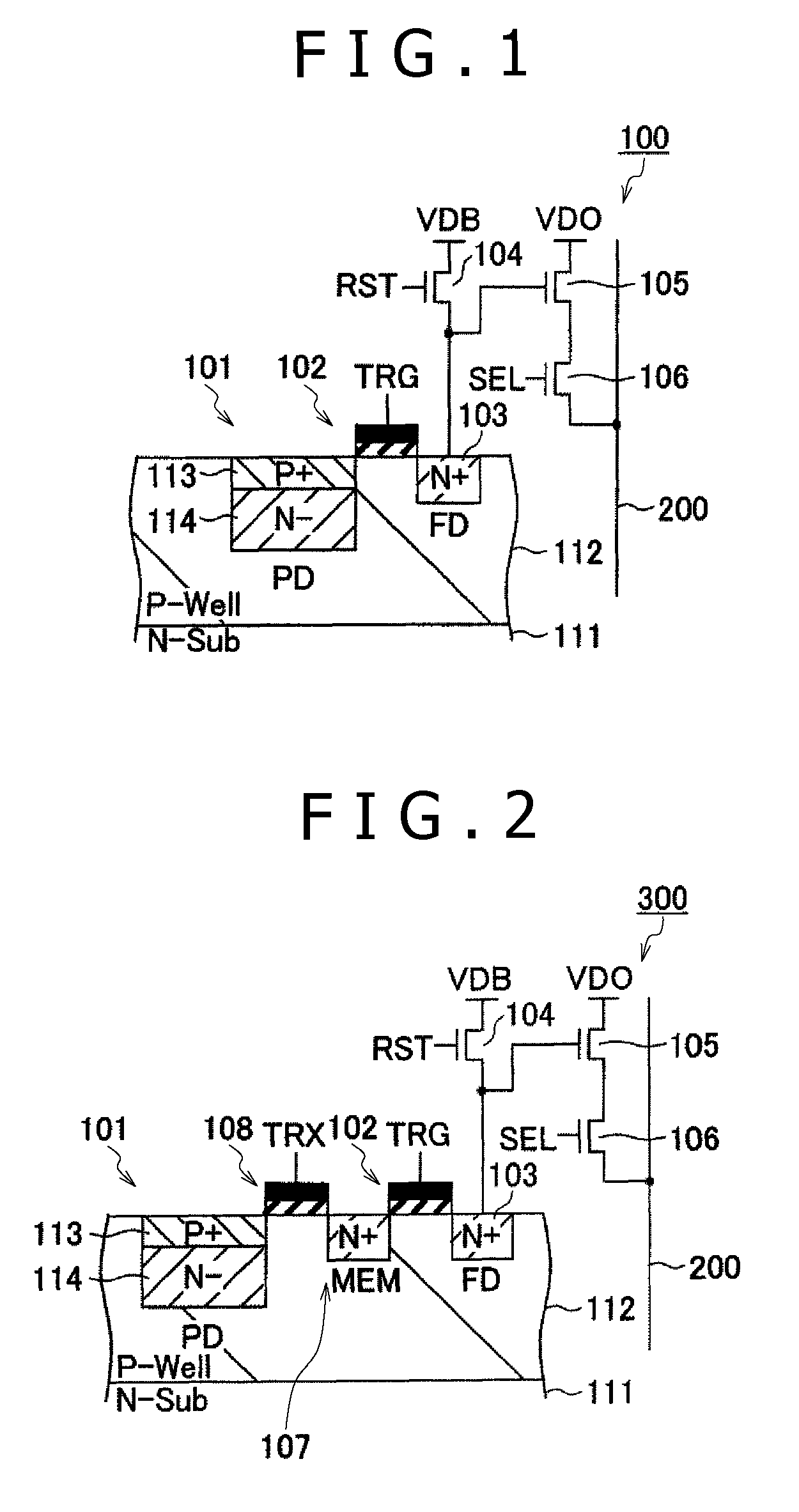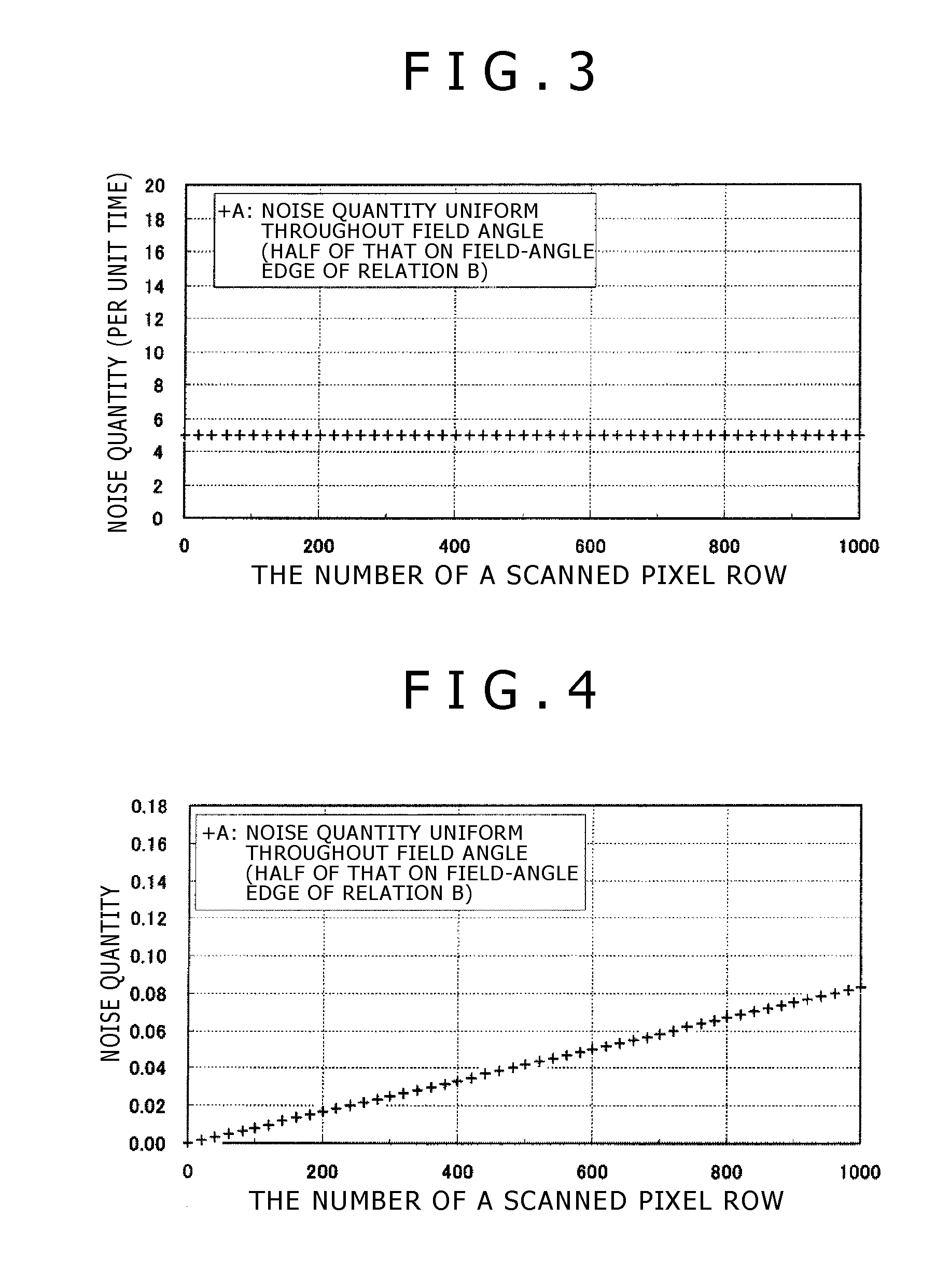Solid-state image taking device and electronic apparatus
a technology of solid-state image and electronic equipment, which is applied in the direction of picture signal generators, television system scanning details, television systems, etc., can solve the problems of ktc noise and image quality degradation, and achieve the effect of eliminating noise components and eliminating noise components
- Summary
- Abstract
- Description
- Claims
- Application Information
AI Technical Summary
Benefits of technology
Problems solved by technology
Method used
Image
Examples
second embodiment
2: Second Embodiment
[0229]FIG. 20 is a pixel structure cross-sectional diagram referred to in the following description of a method for prescribing distances in accordance with the second embodiment. FIG. 20 is a diagram corresponding to FIG. 17 provided for the first embodiment. That is to say, FIG. 20 is a cross-sectional diagram showing a structure along a line A-B shown in FIG. 16. It is to be noted that FIGS. 10 to 16 provided for the first embodiment can also be applied to the second embodiment.
[0230]Much like FIG. 17, FIG. 20 shows a unit pixel on the ith pixel row at the center of the figure, a portion of a unit pixel on the (i−1)th pixel row on the right side of the figure and a portion of a unit pixel on the (i+1)th pixel row on the left side of the figure. The unit pixels are separated and insulated electrically from each other by an element separation layer prescribing an active layer mentioned before. In the structure shown in the figure, the element separation layer is...
third embodiment
3: Third Embodiment
[0234]FIG. 21 is a pixel structure cross-sectional diagram referred to in the following description of a method for prescribing distances in accordance with a third embodiment. FIG. 21 is a diagram corresponding to FIG. 17 provided for the first embodiment. That is to say, FIG. 21 is a cross-sectional diagram showing a structure along a line A-B shown in FIG. 16. It is to be noted that FIGS. 10 to 16 provided for the first embodiment can also be applied to the third embodiment.
[0235]Much like FIG. 17, FIG. 21 shows a unit pixel on the ith pixel row at the center of the figure, a portion of a unit pixel on the (i−1)th pixel row on the right side of the figure and a portion of a unit pixel on the (i+1)th pixel row on the left side of the figure. The unit pixels are separated and insulated electrically from each other by an element separation layer prescribing an active layer mentioned before. In the structure shown in the figure, the element separation layer is a LO...
fourth embodiment
4: Fourth Embodiment
[0242]Next, a fourth embodiment is explained by referring to FIGS. 22 to 26 as follows.
[0243]FIG. 22 is a top-view diagram showing the configuration of a unit pixel PIXB according to the fourth embodiment. FIG. 23 is a top-view diagram showing the basic configuration of a pixel array composed of unit pixels PIXB arranged to form a pixel matrix. The unit pixel PIXB has the pattern shown in FIG. 22. The basic configuration is a configuration for 6 unit pixels PIXB. The pixel array is the pixel array 11 employed in the CMOS image sensor 10 shown in FIG. 10. FIG. 24 is a top-view diagram showing a layout of light shielding films 116 for shielding the basic configuration of the pixel array shown in FIG. 23 against light and a layout of PD openings 116A each provided for one of the light shielding films 116. FIG. 25 is an explanatory top-view diagram showing the basic configuration of the pixel array for three scanned pixel rows each composed of unit pixels PIXB. FIG. ...
PUM
 Login to View More
Login to View More Abstract
Description
Claims
Application Information
 Login to View More
Login to View More - R&D
- Intellectual Property
- Life Sciences
- Materials
- Tech Scout
- Unparalleled Data Quality
- Higher Quality Content
- 60% Fewer Hallucinations
Browse by: Latest US Patents, China's latest patents, Technical Efficacy Thesaurus, Application Domain, Technology Topic, Popular Technical Reports.
© 2025 PatSnap. All rights reserved.Legal|Privacy policy|Modern Slavery Act Transparency Statement|Sitemap|About US| Contact US: help@patsnap.com



